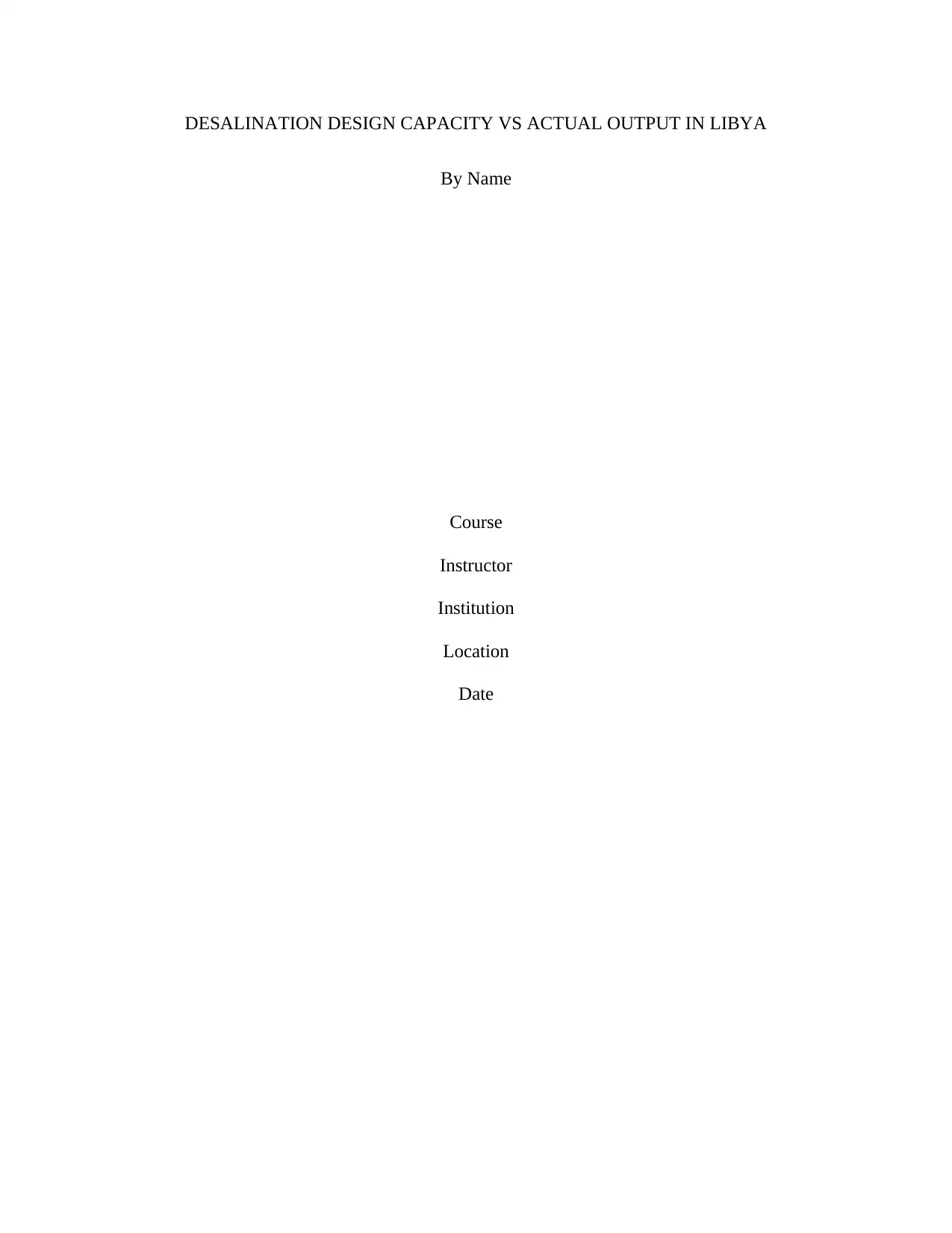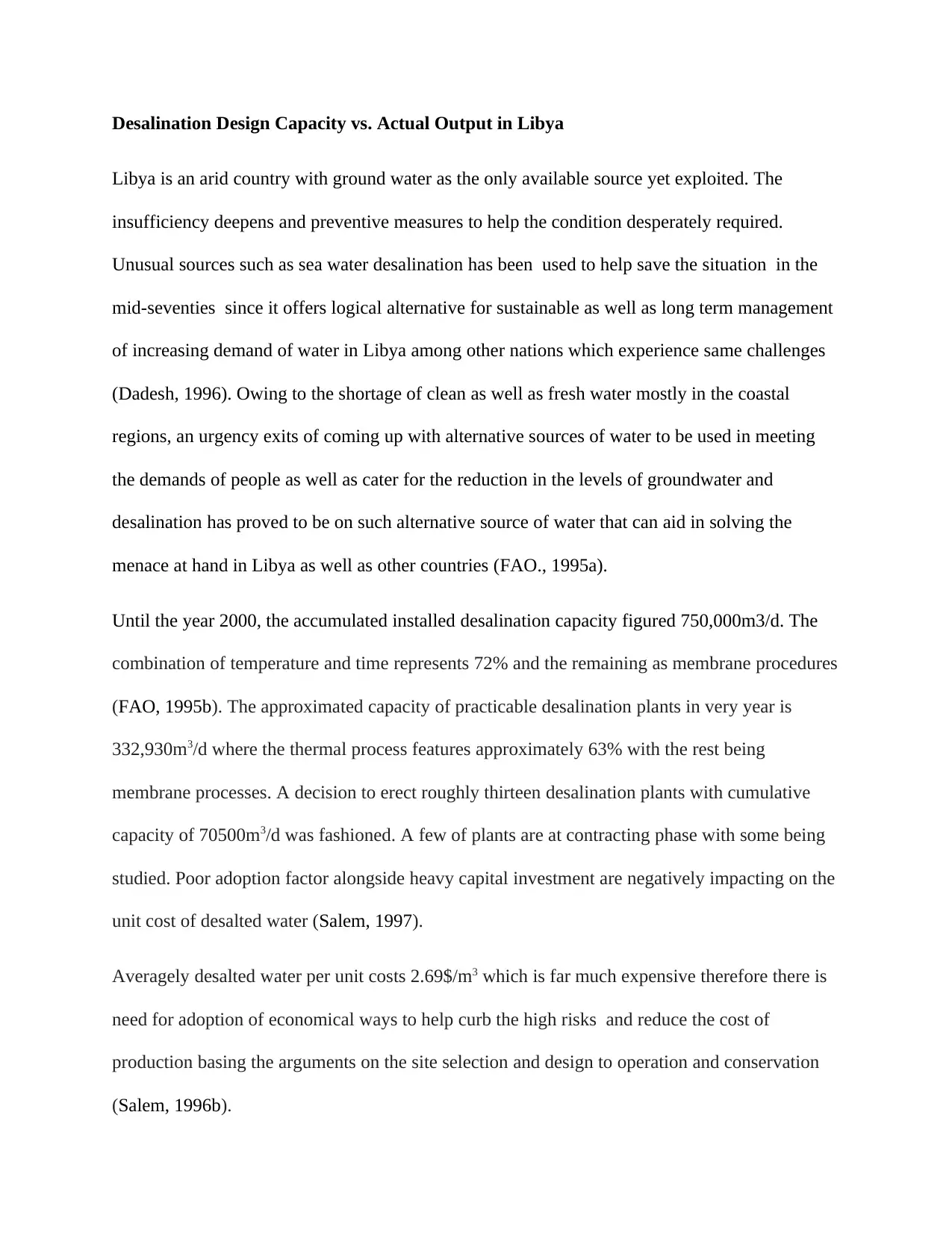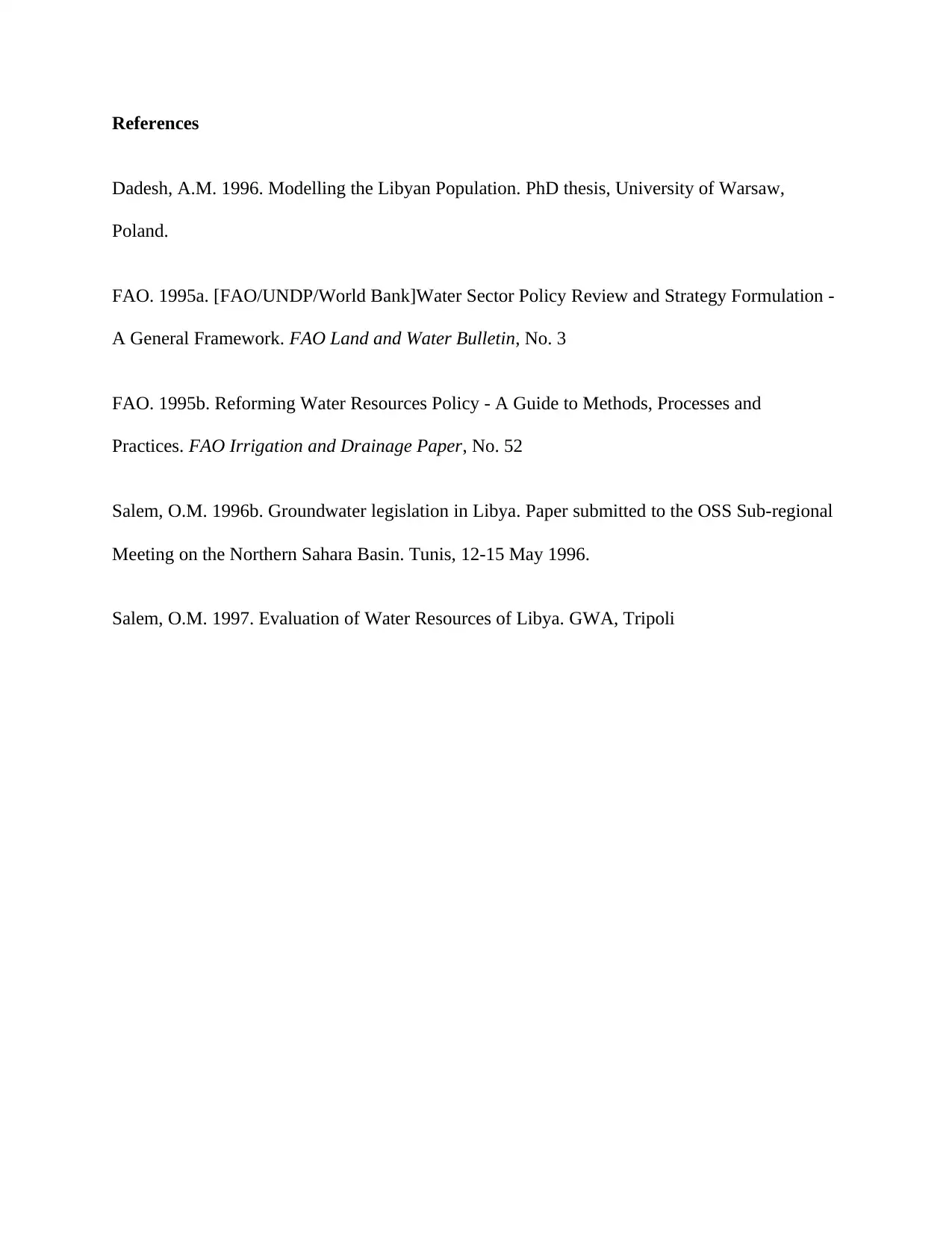Desalination Design Capacity vs. Actual Output in Libya: An Overview
VerifiedAdded on 2023/01/09
|3
|474
|77
Report
AI Summary
This report examines the critical issue of water scarcity in Libya, focusing on desalination as a key solution. Libya, an arid country, relies heavily on groundwater, which is insufficient. The report details the adoption of seawater desalination since the mid-seventies as a sustainable alternative. It provides statistics on installed desalination capacity, distinguishing between thermal and membrane processes, and highlights the construction of new plants. However, the report also addresses the challenges, including high capital investment and unit costs, which average $2.69/m3. It emphasizes the need for cost-effective methods, from site selection and design to operation and conservation, to improve efficiency and reduce expenses. The document also provides a detailed overview of the main reasons for low utilization rate, network bottlenecks, and spare parts availability. The report concludes with a summary of the overall state of desalination in 2011 and references supporting the information.
1 out of 3






![[object Object]](/_next/static/media/star-bottom.7253800d.svg)